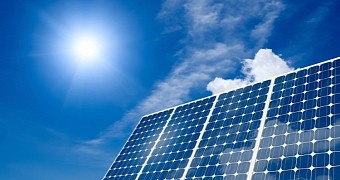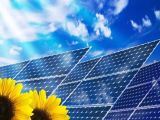This Monday, December 8, scientists with Australia's University of New South Wales announced that, in a series of outdoor tests carried out in the city of Sydney, they managed to convert sunlight to electricity at a record efficiency rate of over 40%.
It's important to note that, back in 1989, University of New South Wales researchers managed to set another world record as far as renewables go. Thus, in this year, one of their photovoltaic systems turned sunlight into electricity at a rate of over 20%.
The achievement was a world first
The scientists behind this project say that, although it is true that the world is no stranger to highly efficient photovoltaic systems, the fact of the matter is that the conversion rate they achieved during outdoor tests in Sydney is a world first.
“This is the highest efficiency ever reported for sunlight conversion into electricity,” said specialist Martin Green, Scientia Professor and Director of the Advanced Centre for Advanced Photovoltaics Professor, as cited by Eurek Alert.
In a paper that will soon be published in the journal Progress in Photovoltaics, Martin Green and fellow researchers go on to explain that their success in converting sunlight to electricity at an unprecedented rate brings new hope that renewables will one day become the world's chief energy source.
So, how did they do it?
The scientists say that, while working on this project, they got help from Australian company RayGen Resources and US-based company Spectrolab. The former came up with the design of the installation and helped build it, while the latter contributed with solar cells.
It is understood that the photovoltaic system put together by this team of University of New South Wales solar researchers and their colleagues owed its unmatched efficiency to a so-called optical bandpass filter that served to harvest sunlight that would have otherwise been wasted.
The filter employed by the installation was custom-made and it served to selectively capture and transmit a portion of the spectrum while rejecting wavelengths that were of no interest to this series of experiments, Martin Green and his collaborators detail.
Otherwise put, the photovoltaic system built by these scientists worked by focusing sunlight. As Professor Martin Green put it, “The new results are based on the use of focused sunlight, and are particularly relevant to photovoltaic power towers being developed in Australia.”
Replicating these results shouldn't be too difficult
As detailed by Dr. Mark Keevers, the solar cells used to achieve this unprecedented sunlight-to-electricity rate were not state-of-the-art, experimental ones. On the contrary, they were regular solar cells, like the ones used by photovoltaic systems now up and running all across the world.
What this means is that it should not be too difficult to replicate the outcome of the tests carried out in Sydney and introduce people to green installations that, although packing run-of-the-mill solar cells, can deliver much more electricity than the ones currently in use do.
Needless to say, the end goal is to make solar power more reliable and consequently more appealing than it currently is. In time, this should help pave the way for a global switch from dirty fuels to environmentally friendly energy sources.

 14 DAY TRIAL //
14 DAY TRIAL // 



